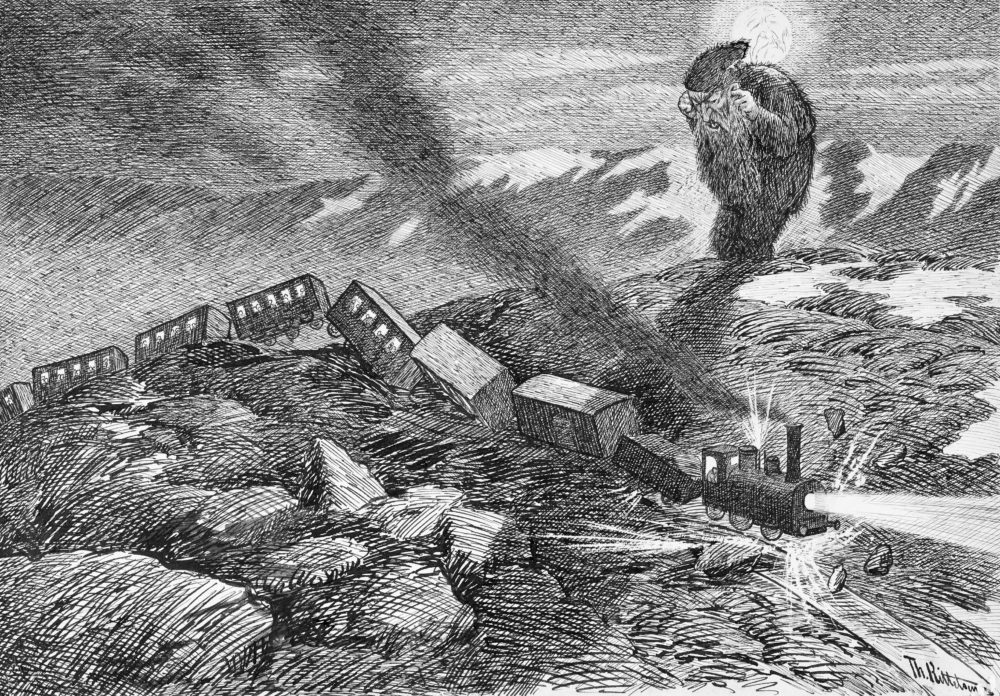The Trollish Theory of Art: A scandifuturist art creation myth
/Studying Nordic folklore, one gets the sense that the performing arts were communicated and taught by dark, subterranean powers. The recent ancestors of contemporary Scandinavians lived in a world where the devil was a fiddler and the malicious water spirit known as nøkken, or the nix in English, could be heard playing sweet and seductive jigs from waterfalls and streams. It was said that he offered apprenticeships to those who dared bring him a sacrificial meal. But these entities do not represent creative independence and freedom without compromise: The devil is unable to perform his devilish deeds single-handedly – he is powerless without the initial consent of either god or man – and the nix possesses, like most goblins, wights and trolls, a murderously ill disposition towards mankind. Trolls and their ilk are not known for their innovation, and are in fact utterly passive creatures that must be coaxed or driven to action. Then, one might ask, what do wights and devils have to offer us? The answer is nature. They illustrate that man in one way or another must approach and confront nature if he is to realize culture. And since nature is rather suspicious, poisonous, capricious, etc., it is represented by such clandestine, anti-cultural agents.
Since trolls first and foremost are beings of nature, they are not motivated by cultural concerns. But though they are anti-cultural, they don’t thereby exist in a culture-less vacuum. Nature and culture reside in a mutually destructive relationship to each other, and one could say that the culture of the troll, as it were, is a reactionary necessity. They coil around one another. Norse poetic theory reveals that the shape-shifting nix was originally perceived as a mutant: a creature that was half one thing, half something else, as addressed in Kunstforum 1/2017. The medieval Icelandic poet and chronicler Snorri Sturlusson thus referred to the aesthetic ideal of pagan poetry as nýkrat: “nixy”, because its metaphors were constructed out of opposed elements – poetic, anti-naturalist mutants.
The perception of art in Nordic folk tradition up until the industrial revolution – the era Norwegians refer to as Det store hamskiftet (literally “The Great Shape-shift”) – may be considered an off-shoot of one we see even in Old Norse and Viking Age sources, and can still be traced in language today. This might seem like a bold statement. But languages reveal metaphors and deep psychological concepts and ideas that are often difficult to identify directly, but can be unveiled in etymology and euphemisms. We usually apply negative connotations to the word “darkness”. To most of us, these lean towards uncomfortable, more or less anxiety-provoking subjects. Many of us are afraid of the dark, but darkness is also associated with seductive moods, instincts and subconscious pulls. The Norse realm of the dead, Hel, has the same etymological root as huldra, a seductive and dangerous subterranean spirit in Nordic folklore. Both words mean “the hidden”. It is precisely to the blackest underworld that gods and men alike must journey to retrieve knowledge and inspiration in Norse mythology.
“That trolls dwell in men is a fact known by all who have an eye for such matters,” wrote Jonas Lie in the introduction to his anthology of supernatural stories, Trold (“Trolls”) in 1891. To whichever end we may ascribe human personality traits to wights and trolls, it will more often than not appeal to our worst natures. The things we would rather hide. Greed, laziness, envy, exploitation or seduction. Any behavior Christianity considers sinful, comes naturally to the troll. Pursuing these metaphors, we may begin to discuss subterranean characteristics. The subterranean is where the trollish has its roots. The trollish doesn’t necessarily reside in the underworld itself, but relates to it much like the Sicilian mafia does to America. And nature is trollish in itself. Thus we may consider trollish personality traits, deeds, impulses, and patterns of thought. And, not least, we may consider trollish aesthetics. A trollish paradigm, not only for understanding art, but also mankind’s masochist struggle between order and chaos, nature and un-nature...
READ THE REST OF MY ESSAY ON THE TROLLISH THEORY OF ART HERE








